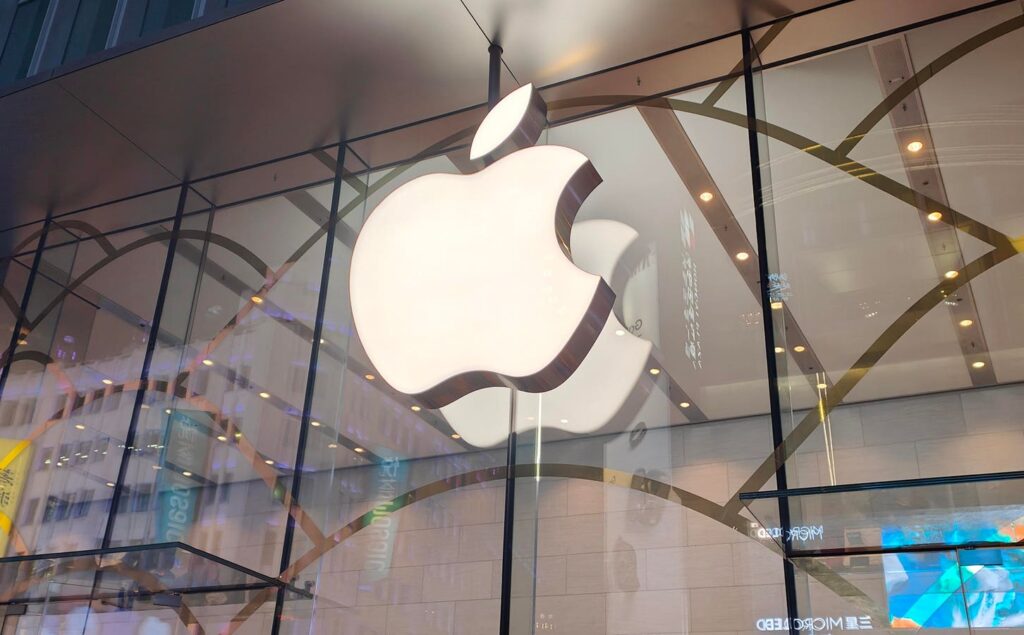Apple stock has fallen over 15% in the last two trading sessions after President Donald Trump announced a broad set of tariffs affecting more than 100 countries. These tariffs hit countries integral to Apple’s supply chain—namely China, Vietnam, and India. On the surface, this development appears to pose a serious challenge for Apple’s U.S. business. The iPhone—America’s top-selling device—and most other Apple products are manufactured overseas, making the company highly vulnerable to rising costs. In a worst-case scenario, Apple’s earnings could potentially decline by up to 30%. However, Apple likely has several ways to counter these effects, including price adjustments, stronger carrier collaborations, relocating production, and expanding its high-margin services segment. Also, learn how META might be impacted in META Stock To $200? What The Current Market Turmoil Means.
A 30% Downside to Earnings?
Although it’s still uncertain how exactly these tariffs will be applied, here’s a rough worst-case scenario. Most iPhones sold in the U.S. are made in China, which is now subject to a 54% tariff. A Nikkei report from last year noted that the iPhone 16 Pro—expected to be the most popular model in the U.S.—costs Apple around $568 to produce. It retails for $1,000, providing an estimated gross margin of 43%. If tariffs raise the cost per device by over $300, the landed cost would increase to about $870, slashing the gross margin to just 13%.
Apple’s Americas segment, which includes both North and Latin America, made up about 43% of total revenue last year. It’s reasonable to assume that the U.S. contributes between 25% and 30% of Apple’s total revenue. After excluding services revenue, which isn’t impacted by tariffs, roughly 20% to 25% of Apple’s income could face major margin pressure. Since other operating costs won’t drop alongside falling gross profits, the effect on net income and EPS could be even greater. A 25% to 30% hit to EPS is well within the realm of possibility. That said, Apple has several tools to help soften the blow.
How Apple Can Mitigate Impact
Raising iPhone Prices: Apple hasn’t changed the base price of its flagship iPhones in over seven years. The iPhone 16 Pro still retails for $1,000—identical to the iPhone X in 2017. Over that same period, the U.S. consumer price index has risen by about 29%. In light of this inflation, Apple could reasonably increase prices by $100 to $200 for the next iPhone without much customer pushback. Since U.S. pricing typically sets the tone globally, this could help improve margins worldwide.
Partnering with Wireless Carriers: In recent years, U.S. wireless carriers have heavily subsidized iPhones to attract and retain users in an increasingly saturated market. Apple might collaborate with carriers to share the tariff burden, with carriers absorbing part of the price hike to stay competitive. Recent increases in wireless plan costs also give carriers more flexibility to offer better deals or financing options for iPhones.
Increasing iPhone Production in Lower-Tariff Countries: At present, most iPhones sold in the U.S. are made in China, which now faces a steep 54% tariff. However, Apple has been scaling up production in India, which only incurs a 26% tariff. While India produced an estimated 14% of global iPhones last year, reports suggest Apple aims to raise that to 25% by 2025 and potentially up to 50% by 2027. Expediting this shift could help Apple protect its margins.
Services Can Mitigate Impact: Apple’s services segment—not only its highest-margin division but also its fastest-growing—posted a 14% increase over the holiday quarter. In comparison, hardware only grew 1.5%. Services margins reached 75% in Q1 FY’25, compared to 39% for hardware. This segment has played a key role in lifting Apple’s overall margins, which climbed from 38% in FY’21 to 46% in Q1 FY’25. Continued expansion in services could help buffer the pressure on Apple’s U.S. hardware business.
Apple stock may face continued pressure in the short term as more details unfold. The stakes are undeniably high. Amid economic uncertainty, ask yourself this: will you hold on to your Apple shares, or will you panic if the stock drops further? Holding onto a falling stock is never easy. Trefis collaborates with Empirical Asset Management—a Boston-based wealth manager—whose asset allocation strategies delivered positive returns during the 2008-09 crisis, even as the S&P 500 fell over 40%. Empirical uses the Trefis HQ Portfolio within its asset allocation strategy to help clients achieve stronger returns with reduced risk—less volatility compared to the benchmark index—as reflected in the HQ Portfolio performance metrics.
Invest with Trefis
Market Beating Portfolios | Rules-Based Wealth
Read the full article here
















